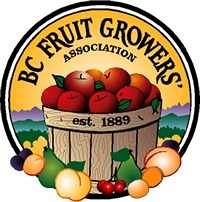White Grubs
General Description
White grubs are the larval stage of June beetles and chafers. One of the most common species attacking fruit trees in the Southern Interior is the tenlined June beetle, Polyphylla decemlineata.
Hosts
Larvae - feed on the roots of grasses and other plants.
Adults - feed on the leaves of trees and shrubs without causing noticeable damage.
Damage
When grass or orchard land preparation for planting trees destroys food plants, white grubs will feed on the fine root hairs and smaller roots of the transplanted trees. The trees gradually weaken and eventually die from lack of water and attack by wood-boring insects.
Identification
Larvae - White body with brown head and enlarged grayish abdomen, 3 pairs of legs, 30-40 mm long; body held in C-shape (Fig. 1).
| Figure 1. Tenlined June beetle larva (white grub). (H. Philip) |
Adult - 20-35 mm long robust beetles (Fig. 2). Adult ten-lined June beetle has eight long white stripes and two short stripes down its back. Beetles will emit a hissing sound when handled.
.jpg) |
| Figure 2. Adult tenlined June beetle. (H. Philip) |
Life History
White grub larvae take 2 to 4 years to complete development depending on species. Pupation occurs in May and June with new adults emerging the following summer. Eggs are laid in the soil.
Monitoring
Inspect the soil for white grubs feeding on the roots beneath any newly transplanted trees that are stunted or appear water-stressed. Adlut males are attracted to lights in the evenings when they are most active.
Management
Cultural Control
Leave virgin or former pasture or hay land fallow for at least one season before planting fruit trees.
Chemical Control
There is no registered chemical control.
